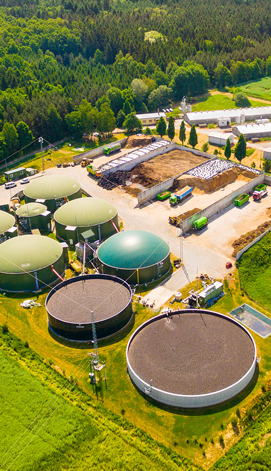
In order to decarbonise the transport sector it is therefore essential in the short- and medium-term to increase the use of renewable energy sources and improve the overall energy efficiency of the transport system. This will have the benefit of not only reducing greenhouse gases but also pollutants that are responsible for poor urban air quality. Nevertheless, increasing the share of alternative low emission energy in the transport sector poses a number of technical and environmental challenges.
The development of a new generation of powertrains will require research and innovation efforts to be focused on a step change in technology. One that allows greater and more efficient use of alternative energies to reduce greenhouse gases. For energy production, research and innovation efforts will need to focus on novel low emission alternative energies based on renewable and sustainable sources.
The Strategic Transport Research and Innovation Agenda (STRIA) Roadmap for Low-emission alternative energy for transport focuses on renewable fuels production, alternative fuel infrastructures as well as the impact on transport systems and services of these technologies for road, rail, waterborne transport and aviation.
The following alternative fuels fall under this roadmap:
- Methane-based fuels (e.g. Compressed Natural Gas (CNG), Liquefied Natural Gas (LNG), Biomethane and E–gas). All transport modes can use it, with the exception of aviation.
- Propane and butane based fuels (e.g. Liquefied Petroleum Gas (LPG) and BioLPG), used only in road transport.
- Alcohols, Ethers and Esters (e.g. Ethanol, Butanol, Methanol, Ethanol-based blend of 95 % (ED95)). All transport modes can use it, with the exception of aviation.
- Synthetic paraffinic and aromatic fuel (e.g. Hydrotreated Vegetable Oil (HVO) and Gas to Liquid (GTL)). All transport modes can use it, including aviation.
- Hydrogen (e.g. CH2, LH2, NH3). All transport modes can use it.
Reducing GHG emissions in transportation consists of two main elements, namely:
- The availability of cost-effective sustainable low carbon alternative energy / fuels (wellto- tank - WTT)
- Improved efficiency in real world utilisation (tank-to-wheel - TTW)
This roadmap deals with the potential impact of alternative fuels on the latter, as well as their potential impact on emissions affecting air quality. Decarbonisation will depend on the full well-to-wheel implications of alternative fuel use, and will need to rely on low carbon and renewable fuels, while alternative fossil-derived fuels could help address in the interim air quality and energy diversification issues. A high-level summary of key elements of a R&I agenda in relation to the different alternative fuels considered is the following:
Data at-a-glance
TRIMIS Data at-a-glance presents the main transport research and innovation indicators based on TRIMIS data. Find out more about the geographical distribution of European Union transport research and innovation funding, discover the organisations involved in transport research activities and the evolution of funding. Discover the TRIMIS overview for overall data and the seven STRIA Roadmaps.
Further details are available in the full TRIMIS Dashboard.






